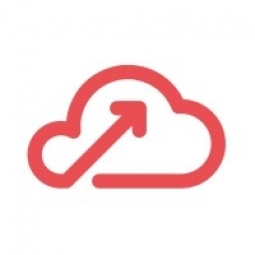公司规模
Large Corporate
地区
- America
国家
- United States
产品
- Microsoft Azure
- Oracle Cloud
- Ascend
- Azure Synapse
- Power BI
技术栈
- Cloud Computing
- Data Pipelines
- Data Lake
- Data Warehousing
- APIs
实施规模
- Enterprise-wide Deployment
影响指标
- Productivity Improvements
- Digital Expertise
技术
- 基础设施即服务 (IaaS) - 云计算
- 平台即服务 (PaaS) - 数据管理平台
适用功能
- 离散制造
- 物流运输
用例
- 供应链可见性(SCV)
- 库存管理
服务
- 云规划/设计/实施服务
- 数据科学服务
关于客户
HNI Corporation is a global leader in workplace furnishings and residential building products. The company generates $2.2B in revenue and employs 8,500 people. HNI was already running some applications on Azure and using Oracle applications in Oracle Cloud. The mission of their data science team is to create business value across all of HNI. The team has a broad skill set of data engineers, data scientists, and data analysts. As the team continued to scale, they required a platform that could scale with them.
挑战
HNI Corporation, a global leader in workplace furnishings and residential building products, was in the midst of a planned five-year transformation from seasonal bulk orders by big distributors to customized orders by dealers, individuals, and enterprises. This required a refactoring of the management of the supply chain by taking control of the data from ordering systems, ERP, and fulfillment systems. The COVID-19 pandemic and disrupted office and work-from-home environments forced HNI to speed up changes to how it does business, requiring a solution with flexibility and speed as a cornerstone for transformation. The data science and analytics team at HNI needed a platform that could scale with them, minimize cross-functional dependencies, reduce time-to-pipeline production, and refocus on the logic versus the infrastructure.
解决方案
HNI found Ascend, a platform that revolutionized the speed and ease by which the data team gets pipelines up and running. Ascend’s ability to expose the data as an API that is fast enough to be consumed directly by dashboards empowered HNI’s data team to launch pipelines in hours, avoid dumping results into a database with yet another API on top. The team taps into the ERP to pull it directly into the HNI data lake on Azure. From there, the team used Ascend to ingest it into their pipelines of transformation logic that processes and analyzes it for demand, cost, and delivery impacts. On the customer side, HNI is now testing more real-time order tracking with an application built on Azure. The data team created a separate environment for Ascend to run inside HNI’s Azure subscription, which was also easier to pass through the security team.
运营影响

Case Study missing?
Start adding your own!
Register with your work email and create a new case study profile for your business.
相关案例.

Case Study
Remote Temperature Monitoring of Perishable Goods Saves Money
RMONI was facing temperature monitoring challenges in a cold chain business. A cold chain must be established and maintained to ensure goods have been properly refrigerated during every step of the process, making temperature monitoring a critical business function. Manual registration practice can be very costly, labor intensive and prone to mistakes.

Case Study
Hospital Inventory Management
The hospital supply chain team is responsible for ensuring that the right medical supplies are readily available to clinicians when and where needed, and to do so in the most efficient manner possible. However, many of the systems and processes in use at the cancer center for supply chain management were not best suited to support these goals. Barcoding technology, a commonly used method for inventory management of medical supplies, is labor intensive, time consuming, does not provide real-time visibility into inventory levels and can be prone to error. Consequently, the lack of accurate and real-time visibility into inventory levels across multiple supply rooms in multiple hospital facilities creates additional inefficiency in the system causing over-ordering, hoarding, and wasted supplies. Other sources of waste and cost were also identified as candidates for improvement. Existing systems and processes did not provide adequate security for high-cost inventory within the hospital, which was another driver of cost. A lack of visibility into expiration dates for supplies resulted in supplies being wasted due to past expiry dates. Storage of supplies was also a key consideration given the location of the cancer center’s facilities in a dense urban setting, where space is always at a premium. In order to address the challenges outlined above, the hospital sought a solution that would provide real-time inventory information with high levels of accuracy, reduce the level of manual effort required and enable data driven decision making to ensure that the right supplies were readily available to clinicians in the right location at the right time.











